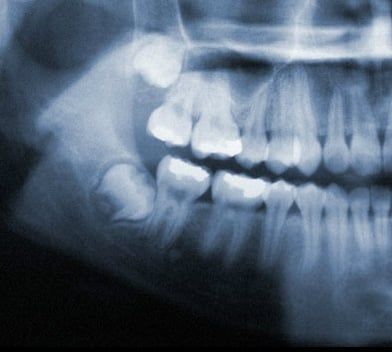oral surgery
1) DO NOT RINSE MOUTH TODAY
Tomorrow if desired rinse mouth gently every 3 to 4 hours (especially after meals) using one quarter teaspoon of salt to a glass of warm water. Continue rinses for several days.
2) BLEEDING
Minor bleeding is normal over the next one to two days. If persistent bleeding occurs, place gauze pads over bleeding area and bite down firmly for one-half hour. Repeat if necessary.
3) SWELLING
An ice bag or bag of frozen peas should be applied to the operated area; 20 minutes on, and 20 minutes off for 4-5 hours.
4) PAIN
For mild to average pain use any non-aspirin type of medication you like. If the doctor prescribes a specific pain medication, follow the instructions and do not mix with other medications unless approved by your doctor.
5) FOOD
Light diet is advisable during the first 24 hours.
6) BONY EDGES
Small sharp bone fragments may work up through the gums during healing. These are not roots; if annoying, return to our office for their simple removal.
7) If any unusual symptoms occur, call the office at once.
8) The proper care following oral surgical procedures will hasten recovery and prevent complications.
Crown lengthening is a surgical procedure that recontours the gum tissue and often the underlying bone of a tooth. Crown lengthening is often for a tooth to be fitted with a crown. It provides necessary space between the supporting bone and crown, which prevents the new crown from damaging bone and gum tissue.
If the extraction of a tooth is required...
1) An incision in the gums is made
2) The tooth is removed
3) Stitches are used to close the incision
During this time, it is important to think about a tooth replacement option. An extracted tooth leaves an open area in the jaw which, in time, allows the neighboring teeth to drift into the area where the tooth was extracted. This in turn, causes a chain reaction to all the surrounding teeth. Also, if you are considering placing an implant in the future, you should consider asking your dentist to place a bone graft at the time of surgery to preserve the bone width and height.
Wisdom teeth under ideal circumstances should grow in straight like any other tooth. However, it is common for wisdom teeth to become impacted inside the jaw or just under the gums. If this occurs, your wisdom teeth should be removed.
Common Impactions:
1) Horizontal Impaction
2) Angular Impaction
3) Vertical Impaction
4) Soft Tissue Impaction
The problems involving your wisdom teeth may be caused by the size of your jaw and/or by how crowded your teeth are. Common warning symptoms that there is an un-natural problem in the development of your wisdom teeth could be pain and swelling.
Symptoms can be caused by:
1) Infection to the gums
2) A crowded tooth displacing neighboring teeth
3) A decayed wisdom tooth
4) Poorly positioned wisdom tooth
5) A cyst that destroys bone


 Request an Appointment
Request an Appointment
